Opinion: How the SAT measures unequal wealth and privilege
Soldiers take the Alpha Army test at Camp Lee in 1917.
April 9, 2021
Next week, many Fossil Ridge High School students will take the PSAT and SAT. My advisory teacher passed out a PSAT study guide last week and received in return groans and questions from students asking if they had to do it. Since elementary school, students have been subjected to standardized tests. The SAT is the culmination of years of testing. It is almost like the boss level in a video game, except instead of getting a winner screen, you get anxiety and judgment from colleges.
While many believe that the only thing the SAT measures is college preparedness and high school success, that is not entirely true. In recent years, research has emerged revealing that the SAT also measures wealth and access to resources. Not to mention the fact that the SAT was based on a test that was originally meant to rank the intelligence of different races.
The SAT was based on a test by Carl Brigham, an American psychologist. During World War I, he worked on the Alpha Test, which was an IQ test used to check intelligence in US Army recruits. In 1923 he published his findings in A Study of American Intelligence. The book analyzed the results of the Alpha Test by race, ranking each race on a scale of “average intelligence” and “mental age.” American citizens and citizens of English and Scottish descent ranked at the top of the list, while African Americans and recent immigrants from non-English speaking countries ranked at the bottom.
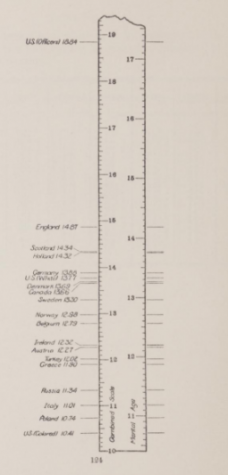
Brigham equated these results to general intelligence. He concluded that America would decline in intelligence because “…we are incorporating the negro into a racial stock, while all of Europe is comparatively free of this taint.” He also declared that his data “indicate[d] clearly the intellectual superiority of the Nordic race group.” Brigham ignored that some test takers were not native English speakers. With questions like: “How many are 60 guns and 5 guns?”, it was confusing to interpret, and led to lower test scores. The Alpha Test not only included verbal puzzles, but complicated decoding and mazes. Testing took place in a stressful environment, according to Brigham the examiners would walk around the room saying “Do it, do it, hurry up, quick.”
Brigham later developed the Scholastic Aptitude Test, also known as the SAT. This test almost mirrored the previous Alpha Tests. The SAT was not very popular at first. In 1941, less than 10% of Americans went to college. This let colleges have more time to review the applicants, and they often administered their own exams. After World War II, the GI Bill passed, which gave veterans assistance in paying for college. College admissions skyrocketed, and colleges were struggling to shift through the applications. The SAT was adopted as a numerical way to rank applicants. Around this time, the College Board changed the ranking system from a low to high score, to low to high preparedness. The College Board still releases data on how the combination of high school GPA and SAT score can accurately measure how prepared a student is.
While the SAT can measure how well prepared a student is, there is another thing it measures that is often overlooked. Wealthier students tend to do better on the SAT. A study from the College Board found that students whose family earns less than $20,000 a year get an average score of 970. This is below the average score on the SAT which is 1059. Students from families who earned more, scored higher. Wealthier students not only have access to expensive SAT prep courses, but also are more likely to go to wealthier schools. Students from low-income families and areas mostly go to low-income schools, which are short on resources.
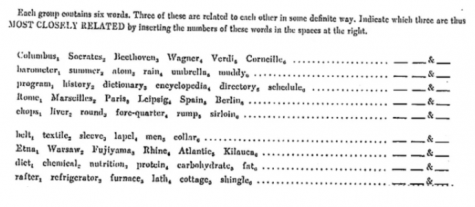
Raj Chetty, a professor at Harvard, completed a study with his colleagues tracking college students from 1999-2013. Students who went to elite colleges came from families who earned around $171,000 a year. Students who went to selective public colleges came from families with an income of around $87,000, and students who went to community colleges had a yearly income of around $67,000. The wealth disparity continued after college too. Those who went to elite schools earned around $82,500 a year in their mid-30s. Students from selective public colleges earned around $41,000 and students from community colleges earned around $30,000.
This is why families and students often spend thousands of dollars to prepare for the SAT. Services like The Princeton Review and PrepScholar charge upwards of $1,000 for programs that are said to improve SAT scores. News of cheating scandals related to the SAT are something we have all heard before. Actors like Felicity Huffman have been caught paying as much as $15,000 to raise their children’s SAT scores.
Colleges are now placing a higher importance on SAT scores. In a study from 2018, the National Association for College Admission Counseling (NACAC ) found that 52.3% of colleges surveyed place a “considerable importance” on SAT scores. Only 2.3% of those surveyed said that SAT scores have no importance. In another study by the NACAC, 46% of colleges in 1993 said that the SAT was of “considerable importance.” In 2005, it was 59%. As colleges are placing more emphasis on this test, America is getting poorer.

In recent years, students have also been getting more anxious about the SAT. A study from Harvard done in 2016 revealed that students are 75% more stressed about testing than in previous years. A study done by the American Psychological Association in 2014, cited in the Harvard study, showed that 69% of students cited “getting into a good college or deciding what to do after high school” as a source of stress, and 65% cited “financial concerns for their family” as a source of stress.
Test day for the SAT is one of the most stressful days of the school year. One day of testing can determine a student’s entire future. When students get a low score, their opportunities and college choice seem to narrow. Retaking the SAT is always an option; a study from Harvard found that students who retook the SAT received a score boost of more than 100 points, which is enough to alter college admissions prospects. However, some students can’t afford to retake the SAT and therefore have to keep their original score.
Even the director of the College Board has commented on the ridiculousness of the SAT. In an article to the New York Times, David Coleman, who is the current director of the College Board said, “When is there a situation in either college or life where you’re asked to write on demand about something you’ve never once thought about?” in response to a question about the essay on the SAT. The SAT has improved in recent years, with an overhaul of the test. The new SAT focuses more on what students learned in school, making it less of an intelligence test, like it originally was.
At the very least, it is downright unfair for colleges to use SAT scores from this year to judge students.
It is even more ridiculous to base a student’s preparedness for college on the SAT during this year, when many students struggled with online school. 4 in 10 teens did not go to online school during the ongoing Covid-19 pandemic. I struggled with my own mental health and finding motivation to attend school. My family opted me out of the PSAT this year and the amount of stress that has been lifted from my daily life has been insurmountable. I get very anxious with testing, and this year has increased that feeling. At the very least, it is downright unfair for colleges to use SAT scores from this year to judge students.
The SAT has a turbulent past, present, and future. Students are getting more anxious over testing, and colleges and high schools are placing more pressure on students to get good scores. Some schools are waiving the SAT, leading to higher admissions from students. But for the most part, the SAT is still as important as it was decades ago. Recent changes have helped the test, but it is still largely unfair towards low income students. The SAT needs to be drastically changed in order to be a true indicator of a student. A test that measures general intelligence has nothing to do with a student’s integrity and value.



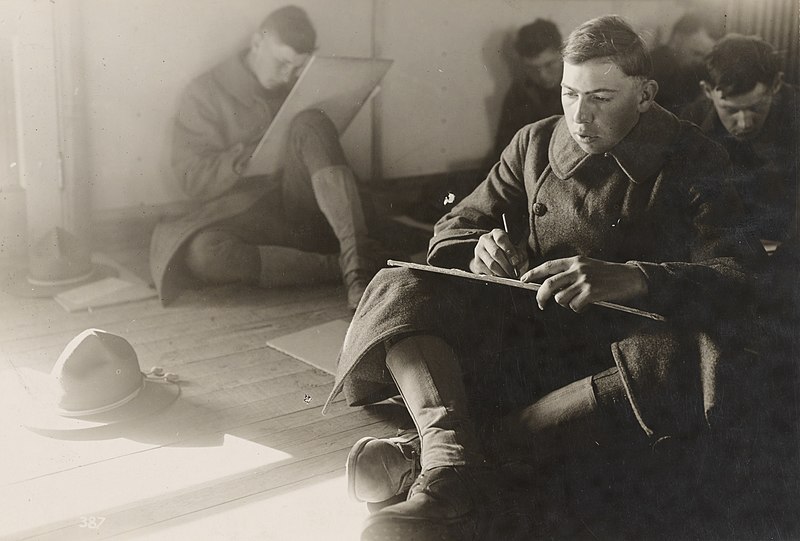




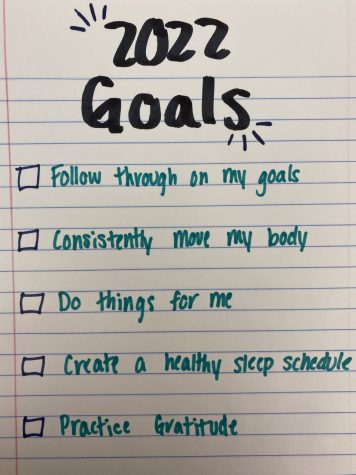


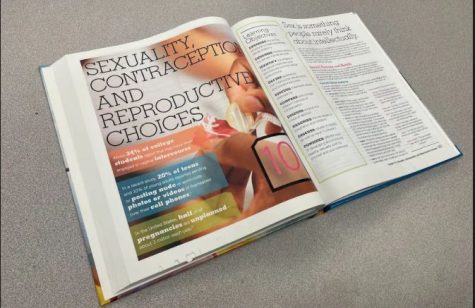



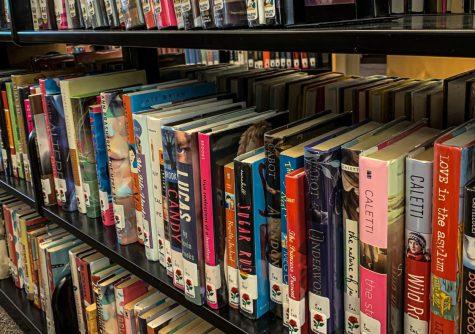


Nicole Grove • Apr 16, 2021 at 7:53 pm
Lizzy – I don’t read many of the etched-in-stone articles but this one caught my attention and I just wanted to say I am really impressed with your writing and your clear understanding and research around this subject. Thanks for taking the time to write this and for your vulnerability in the article. To whoever wrote the comment above – I agree, it’s really cringe that we still use the SAT to determine who gets into what college, considering it’s biased towards those with the most $$$ and is connected to a test that originally measured the “general intelligence” and “mental age” of each race in like the 1920s – isn’t this 2021? I know colleges need something to rank applicants on, but is the SAT really the answer? Maybe volunteer hours or something remotely connected to the character of a person would be a better indicator of how likely a person is to succeed and would be better for deciding who gets into what college? And maybe if we encouraged more community involvement and service work people would be more focused on helping others than just getting a great score on some stupid test and we’d all be better off? Anyways, thanks again Lizzy for your well-written and thoughtful article and for taking the time to publish an article on a topic that people need to be talking about. 🙂
Required • Apr 13, 2021 at 1:58 pm
This is kinda cringe NGL